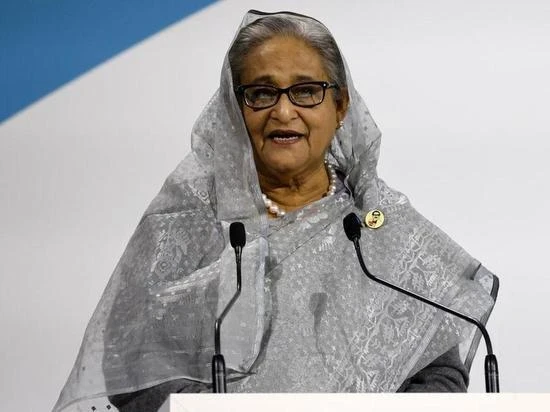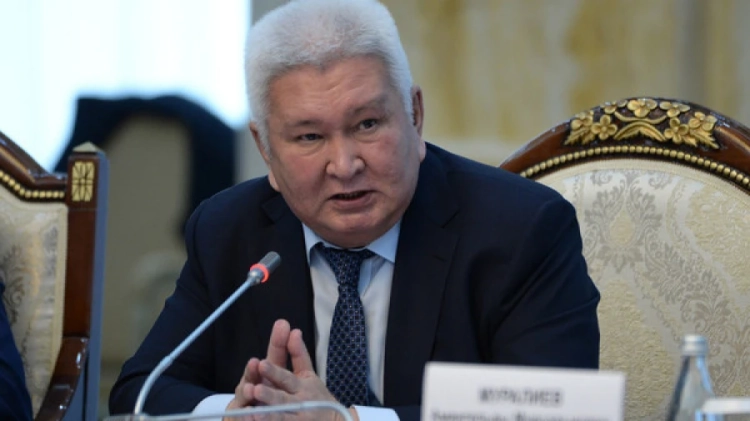The Situation of the Death Penalty in Kyrgyzstan in the 1990s
Statistical data on the number of death sentences issued were not published; however, human rights defenders, including Amnesty International, received information from other sources.According to Amnesty International, from 1987 to 1990, an average of eight death sentences were issued annually in the territory of the Kyrgyz SSR, and all were carried out.
In 1991, the number of death sentences increased to 21.
In February 1993, the head of the citizenship and pardon department under the president told Amnesty International that four death sentences issued in 1991 had been commuted to twenty years in prison. However, at least one execution was carried out in 1993. Amnesty International also reported three sentences commuted to long terms in 1994, while one sentence was executed.
In 1995, at least 30 people were executed, including 21-year-old Vasily Skvortsov.
According to Amnesty International, in 1996, at least 51 death sentences were issued in Kyrgyzstan, of which 15 were carried out (the others were either awaiting execution or received long terms as a result of pardons).
In 1997, human rights defenders recorded a decrease in the number of sentences issued (four such sentences were reported), but at least 26 people were executed (the sentences were issued earlier).
Also that year, the death sentence for Nikolai Sokolov was commuted to 15 years in prison.
At least one execution was carried out in 1996. In 1998, before the moratorium was introduced, courts issued 34 death sentences, of which four were executed.
Methods of Execution and Conditions of Detention for Those Sentenced
After a death sentence was handed down, the convicted individuals were held in separate cells in detention centers.Initial Steps Toward Abolishing the Death Penalty
In October 1997, a new Criminal Code came into effect (starting in 1998), which reduced the number of crimes punishable by death to six. Later, in March 2004, President Akayev signed a law excluding three articles from the Criminal Code that provided for the death penalty (attempted murder of a public figure, attempted murder of a law enforcement officer, and attempted murder of a person administering justice). After these changes, the death penalty remained only for intentional murder under aggravating circumstances, rape and murder of minors, and genocide.Moratorium on Executions
On December 5, 1998, President Askar Akayev signed a decree imposing a two-year moratorium on the execution of death sentences. This decision was announced on December 10, the 50th anniversary of the Universal Declaration of Human Rights, emphasizing its symbolic significance. On the same day, an amnesty was declared, covering about 2,000 convicts (primarily minors, women, and those convicted of economic crimes).The moratorium meant that from 1999, death sentences were not carried out in the country. However, it is important to note that the moratorium did not abolish the death penalty itself but merely suspended its execution. Courts continued to issue death sentences in 1999-2000, although their execution was postponed. According to Amnesty International, even in 1998, before the moratorium was introduced, the number of executions had significantly decreased (four executions compared to 26 in 1997). By the time the moratorium began, a significant number of "postponed" sentences had accumulated in death row cells.
Akayev's decision to impose the moratorium received positive recognition on the international stage. Kyrgyzstan became the first country in Central Asia to make such a decision (while Kazakhstan and Tajikistan continued to execute convicts, Uzbekistan abolished the death penalty only in 2008, and Turkmenistan constitutionally prohibited the death penalty in 1999).
Extension of the Moratorium
The moratorium on the death penalty in Kyrgyzstan was extended annually by presidential decrees. From 2001 to 2004, President Askar Akayev signed an extension of the moratorium each year for one year. Thus, no death sentence issued after 1998 was carried out. Nevertheless, the number of such sentences continued to grow, as courts issued new sentences for serious crimes. For example, in 2003-2004, 31 death sentences were issued, in 2004-2005 - 17, and in 2005-2006 - six.By the end of 2005, there were already more than a hundred convicts sentenced to death in the country (according to official data, about 133 people were in the death row section at the beginning of 2007).
On December 29, 2005, President Kurmanbek Bakiev signed a decree imposing an indefinite moratorium on the execution of death sentences and instructed the government to prepare draft laws for the abolition of the death penalty.
At that time, there was no systemic solution for convicts awaiting execution.
Abolition of the Death Penalty: The 2007 Decision
On June 25, 2007, President Kurmanbek Bakiev signed Law No. 91 of the Kyrgyz Republic, which finally abolished the death penalty in the country. Amendments were made to the Criminal Code, the Criminal Procedure Code, the Penal Enforcement Code, and several other norms. References to the death penalty were removed from criminal legislation, and the highest form of punishment became life imprisonment.After the new law came into effect, all 133 convicts awaiting execution automatically received life sentences. These decisions were made by the Supreme Court, which formally reviewed the sentences and replaced them with life sentences without individual consideration.
Human rights defenders expressed concern that such a mechanical approach (without taking individual circumstances into account) was a result of years of delaying the resolution of the problem.
The complete abolition of the death penalty in 2007 was enshrined at the legislative level, although it was not initially reflected in the Constitution. Only three years later, after the events of 2010, was a new Constitution adopted: on June 27, 2010, a referendum approved the updated fundamental law, which guarantees the "inalienable right to life" and prohibits the death penalty.
Kyrgyzstan's International Obligations
By abolishing the death penalty, Kyrgyzstan fulfilled its international obligations. Since 1994, the republic has been a party to the International Covenant on Civil and Political Rights (ICCPR). After changing domestic legislation, the next step was to join the Second Optional Protocol to the ICCPR, aimed at the complete abolition of the death penalty. This step was taken: on December 6, 2010, Kyrgyzstan ratified the Second Optional Protocol, becoming the third country in Central Asia to join it (after Turkmenistan and Uzbekistan). The Protocol obligates the state not only to refrain from applying the death penalty but also to prevent its reintroduction.Furthermore, since 2007, Kyrgyzstan has actively supported international initiatives against the death penalty. The country voted in the UN for General Assembly resolutions calling for a universal moratorium on the application of the death penalty (resolutions No. 62/149 in 2007, No. 63/168 in 2008, and No. 65/206 in 2010) and co-sponsored the 2008 and 2010 resolutions. These steps strengthened Kyrgyzstan's international image as a state that supports human rights.
Key Events:
- December 5, 1998 – President Askar Akayev's decree on a two-year moratorium on executions.
- 1999-2004 – Annual extension of the moratorium by decrees of President Akayev.
- December 29, 2005 – President Kurmanbek Bakiev's decree on an indefinite moratorium until the complete abolition of the death penalty.
- March 23, 2004 – Law reducing the number of crimes punishable by death to three.
- June 9, 2005 – Approval by the Constitutional Council of the draft amendments to the Constitution abolishing the death penalty (not implemented due to the political situation).
- June 25, 2007 – Adoption and signing of the law abolishing the death penalty and introducing life imprisonment. All awaiting execution received life sentences.
- June 27, 2010 – New Constitution prohibiting the death penalty adopted in a referendum.
- December 6, 2010 – Ratification of the Second Optional Protocol to the ICCPR, which legally enshrines guarantees against the application of the death penalty.
International Obligations and Human Rights Defenders' Assessments
After the abolition of the death penalty, Kyrgyzstan received recognition from the international community. The country demonstrated its commitment to international standards by joining all key treaties related to this area (including the UN Convention Against Torture since 1997 and its Optional Protocol signed in 2008).Human rights organizations such as Amnesty International and Penal Reform International (PRI) played a significant role in this process, monitoring the situation throughout the period. Since the mid-1990s, Amnesty International has called for a moratorium and the humanization of punishments. In 1998, welcoming the initial steps, it continued to insist on the complete abolition of the death penalty and the replacement of all death sentences with lighter ones. Human rights defenders pointed out the shortcomings of the judicial system: torture in obtaining confessions, judicial errors, and corruption. In such conditions, the death penalty posed a risk of executing the innocent. Furthermore, Amnesty highlighted the secrecy of executions, which in itself is a form of cruel treatment of relatives: families did not know when and how their loved one was executed and could not obtain their body for burial. In its annual reports of the 1990s, Amnesty International noted that Kyrgyzstan carried out executions secretly, without publishing data.
The abolition of the death penalty in Kyrgyzstan became a significant achievement of the human rights movement and progressive forces in the country.
Currently, the possibility of reinstating the death penalty is being discussed in society again, which became relevant after the murder of 17-year-old Aisuluu M., provoking a strong reaction. Human rights defenders warn that the restoration of executions not only contradicts the Constitution and the Second Optional Protocol to the ICCPR but also represents a step backward in the field of human rights.
***
The period from 1991 to 2007 was a time of re-evaluation regarding the highest form of punishment for Kyrgyzstan. The country faced typical post-Soviet problems: rising crime in the 1990s, severity of sentences, secret executions without informing families, overcrowded death row cells, and terrible conditions of detention, as well as public fear of criminals and sympathy for victims of judicial errors. Gradually, with the help of international norms and the internal development of society, the understanding emerged that the death penalty contradicts the values of a democratic state and human rights standards. The introduction of the moratorium in 1998 was an important step on this path, and the final abolition in 2007 completed this process.Undoubtedly, the rejection of the death penalty did not eliminate all problems. New challenges arose, such as improving conditions for life prisoners, reforming prisons, and ensuring fair justice without torture and falsifications. The absence of executions highlighted the need to work on crime prevention and the rehabilitation of offenders, as the state bears responsibility for dozens of people who will spend many years in confinement. Nevertheless, by rejecting executions even for serious crimes, Kyrgyzstan confirmed its commitment to fundamental human rights.




































